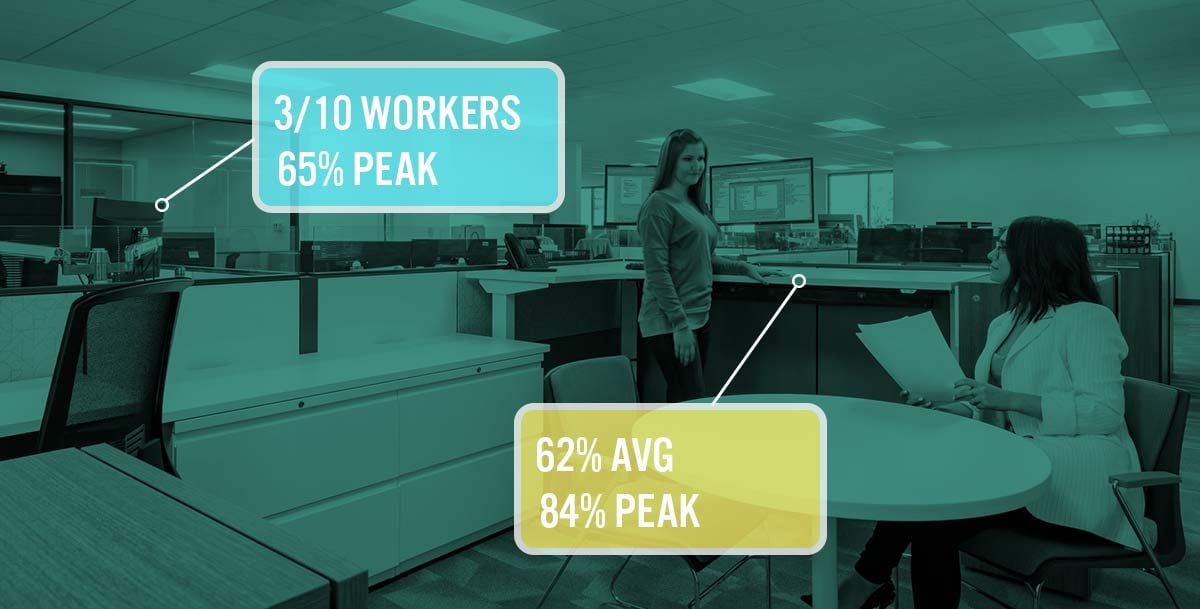 Data drives us. From personal health apps that track our daily steps to analytic tools that measure our businesses, we are immersed in data. The approach to modern workplace design has been impacted dramatically by technology recently. In fact, data-driven workplace strategy informed by insights provided by smart office products and qualitative research will continue to grow. The future of workplace design is one that informed by data for greater productivity and employee wellbeing.
Data drives us. From personal health apps that track our daily steps to analytic tools that measure our businesses, we are immersed in data. The approach to modern workplace design has been impacted dramatically by technology recently. In fact, data-driven workplace strategy informed by insights provided by smart office products and qualitative research will continue to grow. The future of workplace design is one that informed by data for greater productivity and employee wellbeing.
It’s no coincidence that the rise of data analysis runs parallel with the rise of the agile office environment. With more employees working in less traditional ways, from desk-sharing to co-working, clients are using reams of data to create offices that not only cater to these work styles, but also elevate the employee experience.
Smart Office Furniture and Qualitative Research
While data has been driving workplace efficiency for decades, with computer-aided facility management (CAFM) and other software programs helping facility managers track their building spaces and occupancy effectiveness, it’s now starting to shape how offices are designed. The latest movement in data-mining is with occupancy sensors — using internet-connected office furniture, seat sensors, heat maps, and data analytics — to better evaluate seating and office usage patterns. What was once used to to manage energy usage in buildings, has evolved from automatically controlling lights and temperature based on occupancy, to a more holistic application, blending building energy conservation with employees’ working needs.
“As we shift to a more people-centric design, understanding how seats and spaces are being occupied, will be key in creating optimized offices,” said Unisource Solutions CEO Jim Kastner. “Designers and clients can glean information from this data and put practices in place that will remediate out of date floor and seating plans”.
For example, under-used spaces can be reimagined as social lounges to spark employee interaction. Over-crowded work areas can be redesigned to accommodate bench seating. Installing a better conference room reservation system can take the frustration out of group meetings.
Workplace Analytics
Workplace analytics plays a crucial role in improving workplace optimization. With the rise of data analysis and the agile office environment, organizations are using data to create offices that cater to different work styles and enhance the employee experience. The use of smart office furniture and qualitative research allows businesses to gather insights about seating and office usage patterns. This data-driven approach helps designers and clients identify under-utilized spaces that can be transformed into social lounges to encourage employee interaction. It also enables them to redesign overcrowded work areas and implement better conference room reservation systems. By leveraging data, organizations can create optimized offices that not only increase productivity but also enhance employee satisfaction. Embracing workplace analytics is the key to building a better office environment and fostering a more productive workforce.
By understanding density issues, square footage allocation by department, employee perception, and space usage and vacancy rates, designers can create environments that are more conducive to overall office. As leadership marries quantifiable statistics with qualitative research, they will be able to implement a design that boosts workplace productivity and employee satisfaction.






